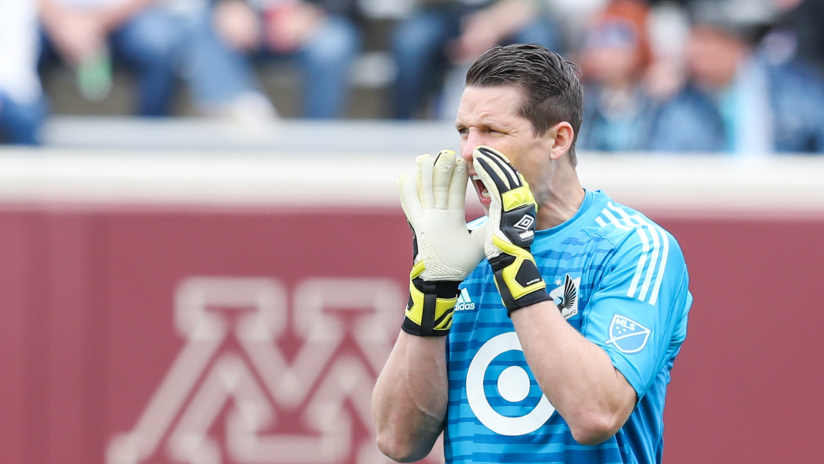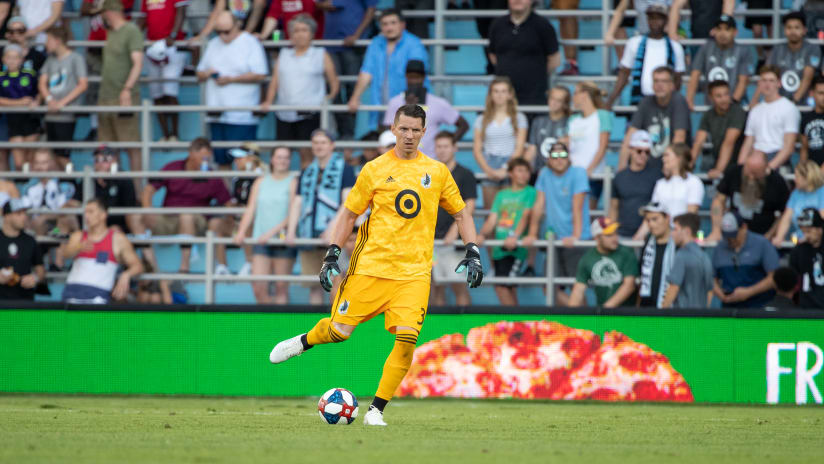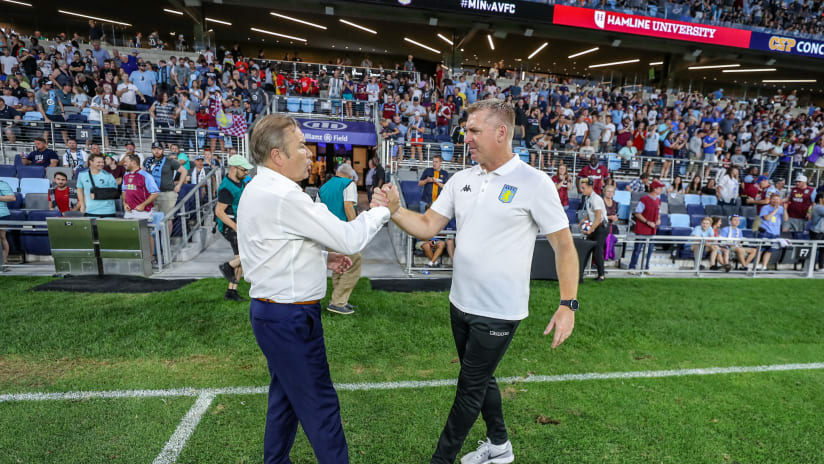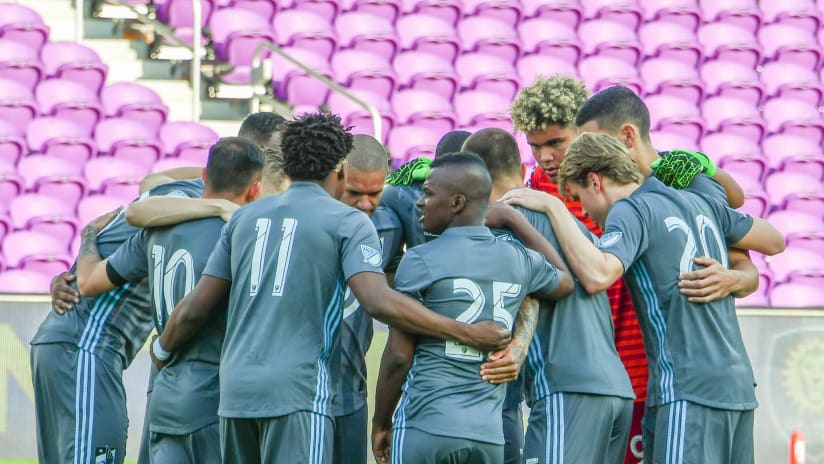In a game predicated more or less on constant movement on the pitch, there are only a few moments in soccer when play stops and the action turns into something like a predetermined play. On corner kicks and free kicks, the game temporarily turns into something very different. Although not as inherently fraught with tension and resolution as a penalty kick, set pieces give us as viewers a moment to take stock of the situation and let the anticipation build in stillness instead motion for a few moments. On free kicks, they also give us a chance to wonder exactly what it is Bobby Shuttleworth is doing with his hands on the near post.
Putting the wall together is a fairly standard operation that players learn when they’re younger. In case it’s not obvious, the goal is to wall off a portion of the goal so that the keeper can focus on defending a smaller area. You put the tallest player on the outside of the wall protecting the near post and go down in height from there.
“There are certain principles that you’re taught as a young kid,” said Shuttleworth. “As you become older and shooters become better and better those things are adjusted. Usually if it is within shooting distance there are more guys on the wall — depending on left or right footer is where you put your tallest guy and your shortest guy. As it gets farther away, less and less people depending on if they bring tall guys into the box, if they’re going to cross or if it is a passing situation.”
The decision making on the keeper’s part, then, comes down to a mix of pre-established practices and an understanding of the game situation in the moment. When Shuttleworth is standing on that near post making adjustments, it’s basically geometry.
“I like to line up the inside leg of the first guy or the outside leg of the second guy with the post that they are supposed to protect because players are so good they can bend it around,” he said. “That is what you’re usually adjusting to cover that near post and make sure they can’t whip it around the goal into the near post.”
The guys who go into the wall is a set thing — everyone knows their role going in. One guy will help the keeper line everything up, sometimes going out behind the ball to check angles. How many guys go in is predicated on position on the pitch, but also personal preference.
“Some will do less on the wall and some will do more on the wall,” Shuttleworth said. “[Bayern Munich goalkeeper Manuel] Neuer always does a lot less on the wall. I have kind of changed it throughout my career. A lot of it has to do with what the coach wants to do as well, obviously. You’re trying to just fight through bodies to get a vision on the ball.”
The bit about what the coach wants to do is significant, because the action of any set piece dovetails into the action that follows it in the game. It’s less a free throw in basketball than a sideline out-of-bounds play — whatever unfolds out of the kick flows directly into the run of play and so who’s in or out of the wall plays a part in where everyone is following the kick.
Then there’s the complicating factor of the opponent and who’s actually taking the free kick. A goalkeeper like Shuttleworth who’s been in the league for 10 years has developed a good sense of what most of the players he’s facing like to do with the ball, who likes to go up and over the wall. There might be two or three players out there standing over the ball, but that’s not really chicanery or subterfuge — it’s more like noise the keeper just has to clear out of the way.
“You’ll usually know which guy is their primary free kick taker,” said Shuttleworth. “If they have a couple guys that are good on the ball, it will depend a lot on where the ball is located, who puts the ball down and how they’re standing there. You can read the body shape and usually tell which guy has set himself up to hit it and which guy is just trying to throw you off.”
Putting the wall together is less about innovation than craftsmanship, in the end. It’s less about secrets than attention to detail. A free kick is the run of play, but frozen for a moment in amber: it’s about angles and space and training and preparation and psychological warfare and no small measure of individual will. The player taking the free kick might be hoping to whip in an inspired curling shot that becomes a highlight, but there’s a smaller, workmanlike beauty to how a player like Shuttleworth puts together the defense that will try to stop it, brick by brick, over and over again, the way he was taught.





